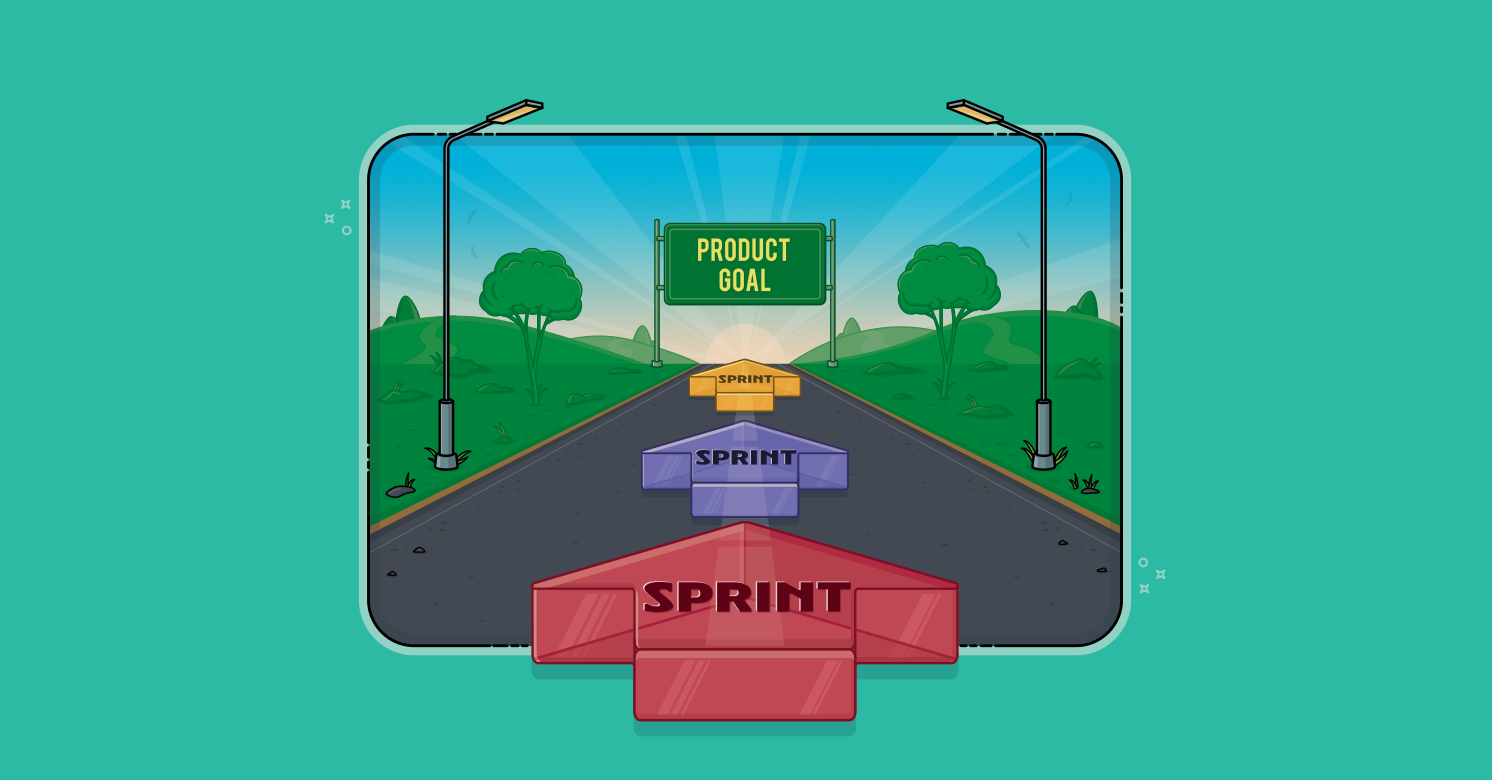How do product house owners get every thing completed? What does their course of seem like earlier than initiatives start, quarterly, and through every dash? Why do they even do sure issues?
Lately, on the Agile Mentors Podcast, Brian Milner performed host to visitor Mike Cohn, with a plan to get Mike Cohn’s insights on simply that–what does a product proprietor do, when and why?
Brian defined his plan to Mike and requested, “Does that sound about proper, Mike?”
“That’s what we agreed to do, nevertheless it’s not what I’m going to do!” Mike replied, laughing.
Mike went on to elucidate that he truly wished to show the tables on the podcast and interview Brian for a change.
Because the mastermind behind The Definitive Information to the What and When of Product Proprietor Obligations, Brian discovered himself within the sizzling seat. And he was prepared, explaining not solely what product house owners do, and when, however why they do it.
A Product Proprietor’s Work Is Chronological and Cyclical
The Definitive Information to the What and When of Product Proprietor Obligations is organized, fairly naturally, by timeframe, contemplating the chronological and cyclical nature of the product proprietor’s duties:
- Chronological: Most initiatives are at the least considerably time sure, constrained by dates or value (or typically each). All sprints observe a selected order of occasions, from planning to the retrospective.
- Cyclical: Most initiatives comprise a number of sprints, in addition to a cycle of “bigger than one dash” check-ins and analysis actions.
Product house owners are a part of the Scrum group and important to the work itself. On the identical time, they function communication conduits between groups and stakeholders. Product proprietor duties are unfold all through the mission lifecycle to help a wholesome tempo and supply the flexibleness to tweak the plan to raised meet buyer wants. Professional tip: There’ll at all times be tweaks to the plan.
To know how and when a product proprietor’s work happens and recurs throughout initiatives, it helps to unpack why the work is essential. The duties of profitable product house owners might be organized into six actions–each containing a “why” and key actions occurring at sure occasions and an everyday cadence. Podcast quotes from Brian present additional perception into why product house owners take these six actions.
6 Actions of Profitable Product Homeowners
Good product house owners know what to do and when to do it. Nice product house owners perceive why their duties exist within the first place. They hold these six actionable pillars in thoughts all through the mission, from earlier than a primary dash to the ultimate launch.
1. Product Homeowners Perceive the Market
To ship the most effective product for his or her prospects, product house owners should perceive buyer wants and desires, and the way opponents are addressing them. They need to put together to come across challenges to their preliminary beliefs, and modifications to the place they match on this evolving panorama.
Earlier than the First Dash
- Analyze market tendencies and competitors, particularly for outward-facing merchandise. Take note of how this challenges assumptions and tweaks product imaginative and prescient.
- Work out who customers are and arrange the large image with a narrative map. Keep in mind that story maps reside paperwork, and topic to vary as understanding evolves.
Quarterly
- Select the following product objective as a information for what to ship, and in what order to ship it.
- Verify on established story maps to see what wants adjusting.
Throughout Every Dash
- Counsel a dash objective and the backlog objects that may help an understanding of consumers’
- Communicate to precise prospects all through product growth, and keep watch over what opponents are as much as.
“There may be some behind-the-scenes, normal product work that we do not actually account for in Scrum: Issues like market evaluation and making an attempt to grasp the aggressive panorama. There’s an entire self-discipline of exercise and work that goes on behind the scenes.” – Brian Milner
2. Product Homeowners Know and Interact Stakeholders
Earlier than product house owners take the imaginative and prescient and story map to the group, they need to outline them with the stakeholders and group. That doesn’t imply every thing is ready in stone, nevertheless it’s essential to begin constructing that relationship on the outset.
Earlier than the First Dash
- Determine stakeholders, and search their help for the product imaginative and prescient and plan.
- Conduct a couple of rounds of story mapping with stakeholders, brazenly discussing that sure features might change because the group strikes ahead.
Quarterly
- Revisit relationships with stakeholders, refining collaboration methods and holding pleasure.
- Deal with important modifications to the street map, emphasizing the group’s dedication to the product, even when meaning altering well-laid plans.
Throughout Every Dash
- Commonly meet with stakeholders for his or her enter, suggestions, and buy-in.
- Facilitate prioritization conferences forward of backlog refinement, together with stakeholders in dash opinions and retrospectives.
“I need to test in with my stakeholders, particularly my key stakeholders, on prioritization in order that it isn’t a shock to anybody… I actually consider the dash evaluation because the product proprietor’s occasion… It offers the stakeholders an opportunity to talk up and say, hey, what about this factor that I had that was actually essential?” – Brian Milner
3. Product Homeowners Preserve the Product Backlog
The product backlog is a residing, respiration doc, topic to vary as product house owners’ understanding evolves. No system can reveal precisely how a lot ought to be in it at first of a brand new mission–the essential factor is that it adapts together with the mission.
Earlier than the First Dash
- Set up the product objective, have a story-writing workshop, and create a product roadmap.
- Write a backlog, however don’t get so caught up in it that there’s a delay getting began on the mission itself.
Quarterly
- Replace the product roadmap, if obligatory.
- Know that some folks will turn out to be connected to the present backlog and roadmap, and battle with modifications. Reiterate that fluidity is important and modifications are wholesome.
Throughout Every Dash
- Make sure the backlog is updated earlier than refinement conferences with stakeholders.
- On the evaluation, look forward at what’s developing within the backlog in preparation for the following dash.
“Sustaining a product backlog requires a sequence of actions. You may need a number of conferences that have to happen right here… If I’ll have the stakeholders are available and assist me prioritize… I’ve acquired to have the stuff that is able to go previous to that assembly. I can not simply present up and go, let’s have a look at what we acquired in our backlog, and we’ll simply type of wing it.” – Brian Milner
4. Product Homeowners Construct Belief
Product house owners have to prioritize belief with group members and stakeholders at each step and switch of a cycle.
Earlier than the First Dash
- Set lifelike expectations–it’s higher to exceed them than to fall quick.
- Use instruments like story maps and roadmaps to advertise visibility into what the group’s creating and what won’t make it into the ultimate product.
Quarterly
- Verify in to see if the present plans replicate the present actuality.
- Observe product economics and talk them with the group and stakeholders.
Throughout Every Dash
- Verify in with the stakeholders on priorities, plans and progress.
- Be certain that stakeholder enter is mirrored within the backlog.
“The story map is a residing, respiration doc.. It is consistently adapting and altering as we add new function areas, as we perceive otherwise how our customers would work together with the product. We will alter and alter it. I would like it to at all times replicate actuality.” – Brian Milner
5. Product Homeowners Behave as Good Teammates
Product house owners actually have their very own set of accountabilities that set them other than the remainder of the group. That stated, product house owners are undoubtedly a part of the group. It’s important that they’re current and take part with the group, not at them.
Earlier than the First Dash
- From the start, contain future teammates, inviting at the least a few of them to estimating and story writing earlier than the official launch.
- Set a precedent of sharing a calendar, as applicable, so group members can plan for essential check-ins. Think about providing a assured each day or weekly block of time when teammates can deliver questions and considerations.
Quarterly
- Work alongside the group in writing new tales and refining product targets and roadmaps.
- Verify in with and replace group members on important shifts in initiatives.
Throughout Every Dash
- Take part in dash planning, each day scrums, and dash retrospectives and host dash opinions.
- Be out there to refine backlog objects, reply questions and spotlight progress.
“Product house owners are usually not by some means separate from the group. They’re a part of the group. So product house owners have the identical objective as everybody else, and that is to ship as a lot worth as potential to prospects. On an ongoing foundation, they should contact base… Ask how are issues in your finish? How are issues on my finish? And the way can we assist one another to type of obtain our targets right here?” – Brian Milner
6. Product Homeowners Begin The place They Are and Enhance with the Course of
Good product house owners don’t get caught up in perfectionism. It’s higher to begin with the intention to enhance than to delay getting began till each potential element is ready in stone. Product house owners who take it one step at a time and stroll alongside their group will get the place they should go.
“You sometimes know the place you might want to begin. You already know, there’s 1,000,000 issues you possibly can do. However when you may have a giant concept for a product and also you’re beginning recent and also you’re beginning new with it, at the least in my expertise… I at all times know the place I am beginning. And that is what I’d encourage you to do is simply get it on the market, get it began. Even when you do not have all of the completely different options and features of it thought by, that is OK. You simply need to begin making progress so that you study.” -Brian Milner
What Ought to a Product Proprietor NOT Do?
Mike’s closing query to Brian is likely to be the proper technique to wrap up the recommendation for product house owners:
Mike: “What is the one factor you’d inform product house owners to not do?”
Brian: “Perceive the boundary between the what and the how, and actually attempt to keep out of the how. We’re in cost, as product house owners, of the what aspect of the equation. What’s it that we will be doing? What are we targeted on?
“The builders are accountable for the how. How will we accomplish this? What’s one of the simplest ways to ship this?
“As a product proprietor in my previous, I’ve at all times struggled with that stability of, yeah, however I’ve acquired a imaginative and prescient in my head of precisely the best way I would like it to play out. And I’ve to rein myself again in… My position is to not clarify precisely how the web page goes to want to look and precisely how this function performs out. If there’s not a authorized cause or compliance that I’ve acquired to do it a method, then I need to, as a lot as potential, keep out of the home in order that the builders actually get to exert their experience.”

